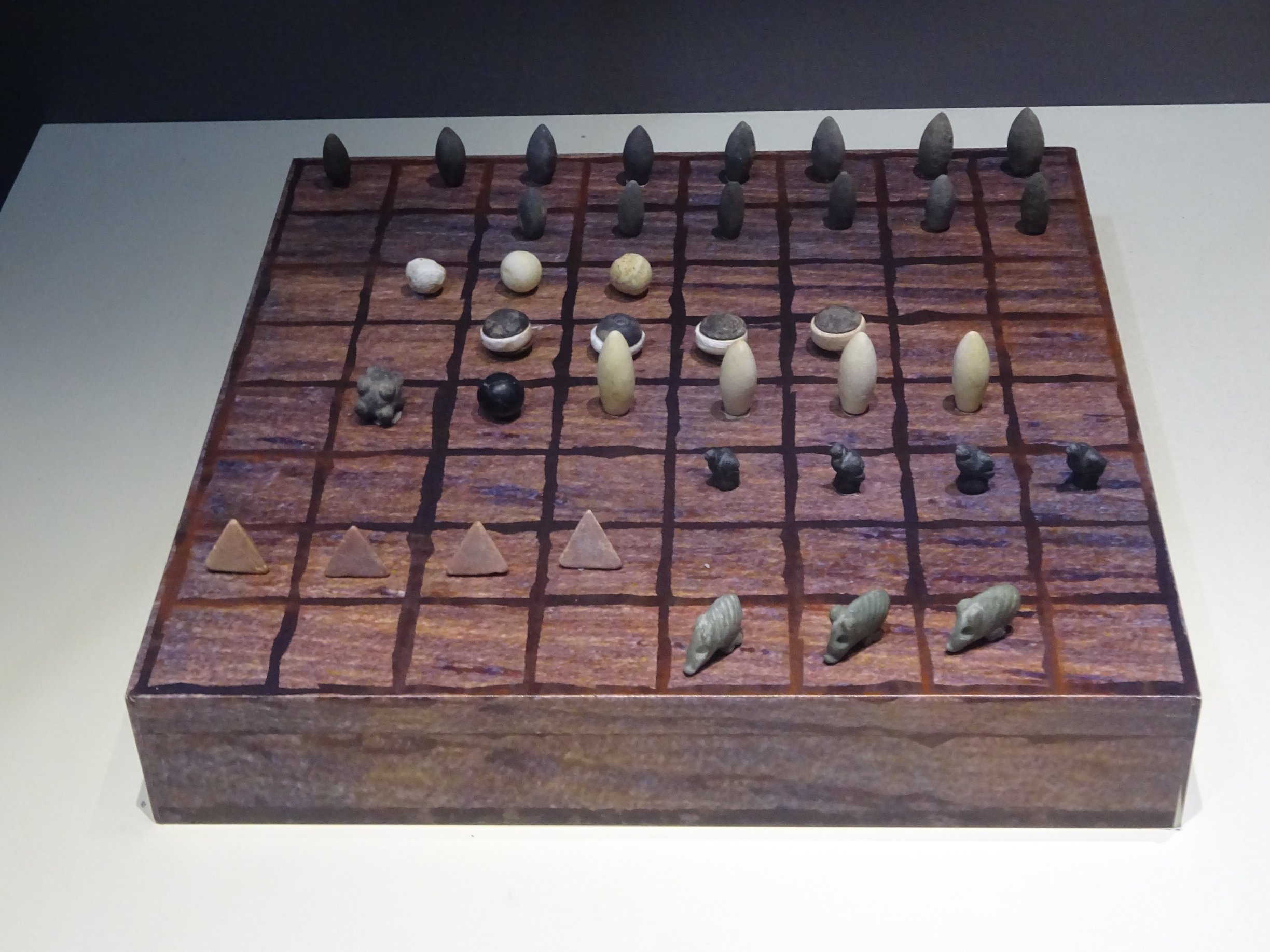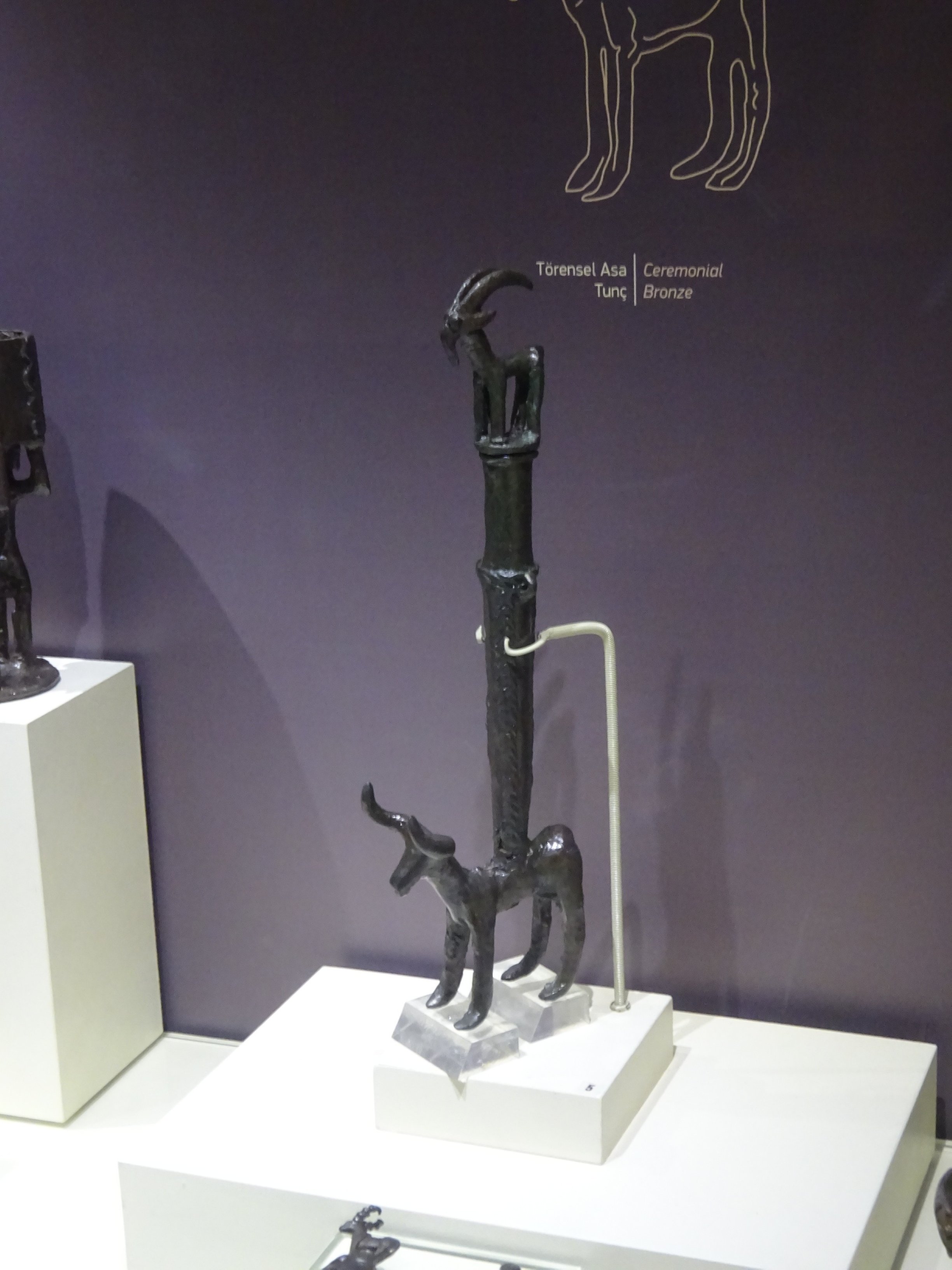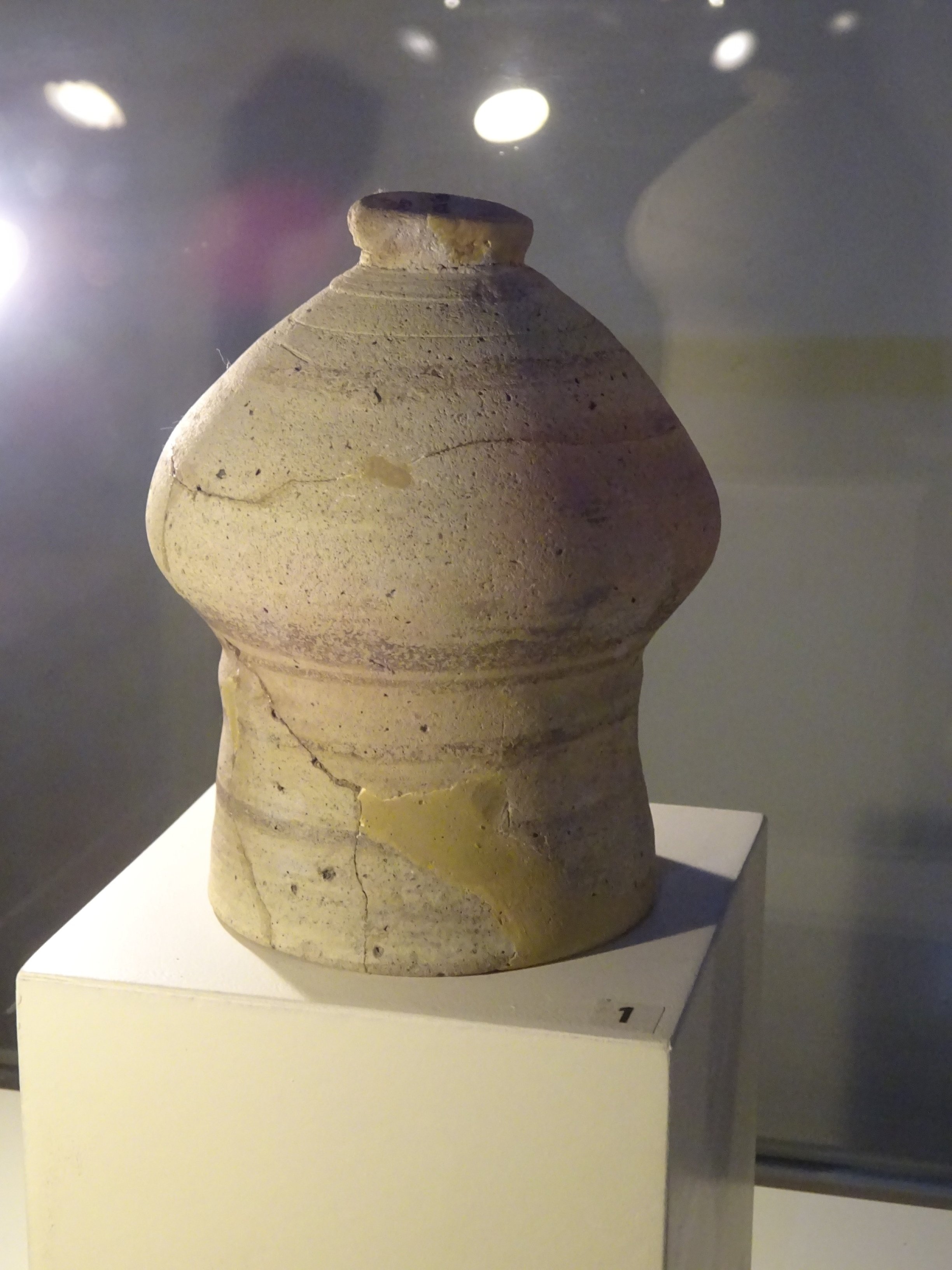© Turkuvaz Haberleşme ve Yayıncılık 2025
At Batman Museum, as one passes through the street gate into a courtyard bordering the exhibition garden, the first thing to notice is the huge honey-colored sandstone wall of the museum itself with a square embossed with the name of the Prophet Muhammad on its four sides in a beautifully sharp geometric script, as was perfected in the nearby site of Hasankeyf; indeed, it perhaps originated there.
The exhibition space inside this building is relatively small, consisting of three rooms dedicated to the Stone Age, the Bronze Age, and finds at Hasankeyf, respectively. Its size should not prejudice the visitor against the museum, though, as it contains artifacts that would make many a haughtier museum in the broader world envious. Moreover, the province of Batman sits on the region of the upper Tigris, and the environs of this river, as might be expected from its status as one of the “Rivers of Eden” of the Bible, are of age-old significance. Indeed, it is one of the historically most significant areas of the world, as the finds in the museum demonstrate.
I came across the idea somewhere that in a museum, it is worthwhile to stop and look at a few exhibits rather than give an equal, somewhat cursory eye to all on display. It prevents everything afterward from becoming a blur and means that the time spent on an artwork or artifact by its creator gets a fairer recompense. It is an approach that I have been taking in museums for some years now. I practiced it in Batman Museum, despite its relatively small size. In my approach to this piece, I have continued with this mindset. I have chosen from among the exhibits I really focused on five specific ones rather than attempting an overview of all the riches of the museum. I feel that in this way, the reader is provided with a more intensive sense of what it has to offer. The exhibits that I have selected do not all originate from the same era or the same archaeological site. I have chosen them simply because of their appeal to me.
One cabinet between the exhibition rooms is clearly the museum’s highlight, deservedly so. It contains gaming pieces from the third millennium B.C., discovered at Başur Mound in the neighboring province of Siirt.

It is reasonable to assume that the 8x8 square wooden board upon which the pieces have been arranged is an invention of the museum itself as a frame for modern minds familiar with the games of draughts or chess.
The panel explaining the find in English has specific grammatical issues, but the meaning is clear enough. It informs the visitor that “these artifacts consist the richest game group in the period” and that “this play set becomes a candidate to oldest game stone in the Near East.” The game must have resembled chess more than draughts due to the differentiated pieces. They mix geometric shapes and specific animals – dogs and pigs. What draws the eye to them is their workmanship; each is a tiny handcrafted marvel. The geometrical pieces evince ideal geometry. The four little pyramids placed in the second row of the board perfectly resemble in miniature the monumental ancient tombs that overlook the Nile, but of which it is highly improbable the maker had any knowledge. The erect piece that the information board calls a “bullet” is far more beautiful than that ugly violence-implying name would suggest. Instead, with its tapered shapely curve, it looks as if it has come from the hands of a famed Art Nouveau artist such as Emile Decoeur. As for the pig pieces, they are yet naturalistically carved, even boasting tiny ears, and appear as if foraging for food. A surprise concerning this game set was to come later. Having left the indoor section of the museum by then, in the garden, among other recreations, such as the mudbrick house, I came across a recreation of the game set with giant pieces, an excellent idea for inspiring children an interest in their heritage.
Continuing in the museum building, though, on the right wall of the hall dedicated to the Bronze Age is a fascinating artifact whose height is about a human forearm.

This artifact is a ceremonial bronze of a goat, replete with giant horns and a beard, atop a column surmounted by the back of a bull. While the goat appears naturalistic enough, it might be thought that the bull figure looks more like a stag and, as such, must have been highly stylized by its ancient designer. Yet, it is worth remembering that the meat-heavy beasts we take for bulls today are the relatively modern outcomes of selective breeding; the animal was wirier in appearance in ancient times.
The bronze bull is strongly reminiscent of the Hittite one in Ankara’s peerless Museum of Anatolian Civilizations. An enlarged modern version of the latter also stands at the traffic junction just up from above the Sıhhiye Metro station there, reflecting that in the earlier years of the Turkish republic, a conscious effort was made to draw on the ancient past of Anatolia symbolically. Yet, in the Batman Museum, some items provide other symbolic connections between old and later Türkiye, even though their creators could not have guessed at them.
Proceeding around this room in a clockwise direction, the first object that symbolically foretells the future of this land is a simple item.

It comes from the Gre Amer Mound, directly to the east of Batman. While it is labeled as a painted terracotta piece of “Khabur Ware” from the late Bronze Age, there is little trace of the paint still on the object. It is obviously a small storage vessel of some kind; its beauty lies in the perfection of its proportions. The way the symmetrical top mushrooms out before curving back inward to meet at the top is strikingly reminiscent of the dome of a mosque. However, it predates the introduction of Islam in these lands by many centuries. More intriguing is that it resembles the dome of Central Asian rather than Ottoman mosques, seemingly heralding the Turkic Muslim peoples who will move westwards into the land of Anatolia.
The object in the following display has a similar prophetic symbolism, though this time through its bewitching color rather than shape.

It is one of three turquoise-glazed terracotta pieces. Turquoise is aptly a word redolent with beauty. Etymologically, it comes into English through the French "pierre turquoise," meaning “Turkish stone.” Thus, it, too, links these objects with the future owners of the land in which they will be discovered. As for the things themselves, they date from the ancient Persian period and thus from the time when Anatolia had entered the age of great empires, a period that only really ended about a century ago. As befits their imperial origins, these objects manifest more excellent workmanship. Pride of place has been given to the sizable two-handled jar, but I do not think it is the most beautiful. Displayed to its left, and slightly overshadowed by it, is a smaller piece belonging to a later Persian dynasty.
This “Turquoise Glazed Bottle” is, in my view, superior in its aesthetic, if not necessarily in its artistry. Once again, it is its proportions that have caught my eye. It is of a more pleasing shape than its grander neighbor, with the transition of the curve of its body from the top to the bottom being less abrupt. The handle is simpler yet more graceful than the somewhat offputting effect of the twisting double handles of the former, even if this is, as the expert R. Ghirshman notes, “a favorite motif” in ancient Persian art.
Leaving this display room and passing once again the gaming above set, the final room is dedicated to the world-renowned Hasankeyf located in the province of Batman. Here there are items from various periods in history, but as reflects its apogee being in the Middle Ages, its most important things are medieval.
The object that particularly caught my eye here is a simple but stunningly beautiful medieval bowl.
Its decoration demonstrates what a skilled artist can achieve in the naturally limiting medium of monochrome. However, the blue of its design is the same as that associated with the best porcelain work in China. It provides evidence of the pan-Asian cultural interactions that arose during the Mongols’ wake. As for the design itself, it evidences those two aspects for which Islamic art is particularly known. That is, geometric patterns and plant life, human and animal figures being disapproved of. Here the artist has united the two into one, producing a hybrid in which each, through its union, surpasses what it could have been alone. The severity of geometry has been smoothed to the looser swirls of exuberant foliage, which is tamed by being effectively mirrored on either side. All in all, the bowl seems to be a celebration of nature and its Creator, the tendrils of the flowers reaching out reverently like hands in worship toward the top of the bowl, or Heaven. What I found particularly impressive is the stately and elegant cypress in the middle of the work.
Although it too is sprouting out of a mass of herbage, that herbage somewhat resembles flames, and as such, the cypress, rather than evoking its role as the standard tree of the graveyard, instead seems to be the phoenix born out of fire or the symbol of life after death. It also deserves to be mentioned here that the cypress plays a significant role in medieval Islamic poetry as a metaphor for beauty. Here it is beauty itself. Unfortunately, most of the bowl’s rim has been lost, but the little which remains evinces the delicacy with which this, too, had been made. The foliage once flowed right around the rim with the ease and tranquillity of the great Tigris beside which it was found.
Nevertheless, it does so within two delicately painted parallel lines. Once again, therefore, we have nature and geometry. Here, the flowing foliage can be seen as resonant of our emotional being, the affirmation of which is the only way to make life pleasurable, but with the suggestion that our dynamic nature needs to be kept in check and channeled, as with the parallel lines, by the firm limits placed upon it by our higher faculties of faith and reason. I have no idea if such works as these were done for decoration or use, but if it were the latter, then it would seem to me to be almost impious to eat out a piece of art of such exquisiteness.
The less known about a historical era, the more the imagination can fill the void. This is particularly true for the periods of prehistory for which there are few to no textual records. It is thus possible to look at these objects, some of which appear strange and exotic to us, and wonder at the peculiar lives that their possessors lived. But it is also possible to speculate in another direction, which is more likely to be correct. For I believe that such exhibits on display in the Batman Museum, including those I have not covered above, prove a fundamental continuity in human life for at least the last four thousand years or so. Of course, our world would be almost entirely unrecognizable to the makers and original possessors of the objects on display. However, the changes that have affected our planet since then are arguably more superficial than fundamental, however much we may have benefited from them.
The routine of life is still taken up in work and tending to our daily needs. The terracotta pots on display may have been replaced with stainless steel ones, but their function is the same. The tools we use to work with – in my case, the computer – are also superficially far removed from those used to plow fields, husband livestock, or produce clothing, yet fundamentally in their purpose of providing a livelihood, they are alike. The same point can be made for the weaponry used by the defenders of their communities.
We also expend effort taking great care of our appearances, as did our forebears, as indicated by the comb or necklaces in the museum. They demonstrate that the obsession with appearance, which powers the multibillion-dollar cosmetics industry, is a phenomenon with deep roots. Finally, there is relaxation. In our leisure hours, we still enjoy playing games. Those played on boards with pieces have been somewhat supplanted within my lifetime by those on computers, but their essential nature, a comradely competitiveness, is still the same.
Probably in their religious practices, the people of ancient times would appear most strange. But if ritual and theology are ignored millennia later, religion still plays a central role in this region. Those who are irreligious may admit some sense of continuity from the past among today’s religious practitioners but condescendingly feel they are superior to such things. Yet, I would argue that the appearance is also more significant than reality. Religion, in its long history, intertwines mundane and spiritual interests – indeed, it does not see them as separate. Worship aims to ward off evil in this life and the next. In the past, the sins of this world were more direct, whereas modern life has somewhat removed us from them. For instance, a failed harvest locally today may be easily solved by importing food from elsewhere and financially supporting farmers, whereas in the past, it would cause famine and the loss of livelihood.
In the past, the priesthood of ancient religions would have been viewed as a body of exceptional people due to their specialized knowledge that was believed could ward off or ameliorate such evil through their ability to placate divine entities. That explains their high status in their communities. Yet, those whom the irreligious hold in high regard are not so dissimilar in a certain sense. In their times of difficulty, they, too, turn to those with specialized knowledge, such as doctors, scientists, or engineers, who they believe can ward off or ameliorate the evils of this life. So perhaps none of us are so different from our ancient forebears.
Regardless of one’s views on this question, Batman Museum resembles all of the items I have highlighted here in one specific way: it is small but absolutely worthy of being looked at. Therefore, I strongly recommend to anyone in the area to set aside at least a couple of hours to peruse the exquisite objects in this magnificent museum for themselves.
